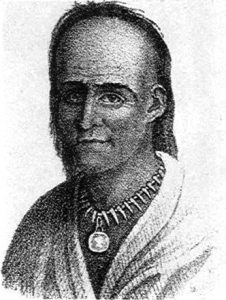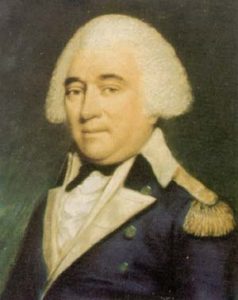On August 3, 1795, the Revolutionary War on the western frontier finally ended with the signing of the Treaty of Greenville. This treaty signaled the end of British control of Mackinac Island, and heralded the American occupation of Michigan. Although the Treaty of Paris of 1783 formally ended the war between the American colonists and the British, the indigenous residents of what would become the United States had not been consulted. As a result, the Revolution evolved into the Northwest Indian War, fought between Americans pouring westward over the Appalachian Mountains and the plethora of indigenous nations known as the Western Confederacy.

The years leading up to the 1795 treaty had seen atrocities committed on both sides. The British refused to abandon their western posts, including Fort Mackinac, because the fledgling American government had not honored all of the provisions of the Treaty of Paris. These posts continued to supply the Western Confederacy with guns and ammunition as part of the fur trade, and these weapons were in turn used to defend indigenous lands from encroaching settlers. The new U.S. government repeatedly attempted to subjugate the indigenous peoples of the Old Northwest by force, only to be met with stunning defeats. In 1790, General Josiah Harmar led a small group of U.S. Army regulars and nearly 1,000 militiamen into eastern Indiana, where they were decisively defeated by an indigenous coalition led by the Miami chief Little Turtle. The next year, Major General Arthur St. Clair commanded a combined force of U.S. Army regulars and militia which marched into northwest Ohio. The St. Clair expedition experienced one of the worst defeats in U.S. military history at the hands of Little Turtle’s coalition. The American forces suffered over 900 casualties and lost over $30,000 worth of ordnance.
As a direct result of the St. Clair disaster, and at the urging of President George Washington, in 1792 the U.S. government created a more powerful military force specifically designed to defeat the Western Confederacy. Known as the Legion of the United States and commanded by Major General Anthony Wayne, this force campaigned through Ohio in the coming years. In 1794 the army, popularly called Wayne’s Legion, defeated Blue Jacket’s forces the Battle of Fallen Timbers, near present-day Toledo. While casualties were fairly even on both sides, the British at nearby Fort Miami refused aid to their indigenous allies, and word quickly spread of Wayne’s victory.
The following year, Wayne called the Western Confederacy leaders to Fort Greenville in western Ohio. There, on August 3, the assembled

representatives agreed to formally end the Northwest Indian War, and the indigenous leaders agreed to cede much of Ohio to the United States in return for annual payments. The Ojibwa representatives included Mackinac Island and Bois Blanc Island as an additional present to the U.S. government. At the same time, John Jay negotiated another treaty in London to resolve lingering issues with the British, including their continued possession of the forts at Mackinac and Detroit. With their indigenous allies temporarily defeated, the British relinquished these posts a year later, and Mackinac Island formally became part of the United States on September 1, 1796.









